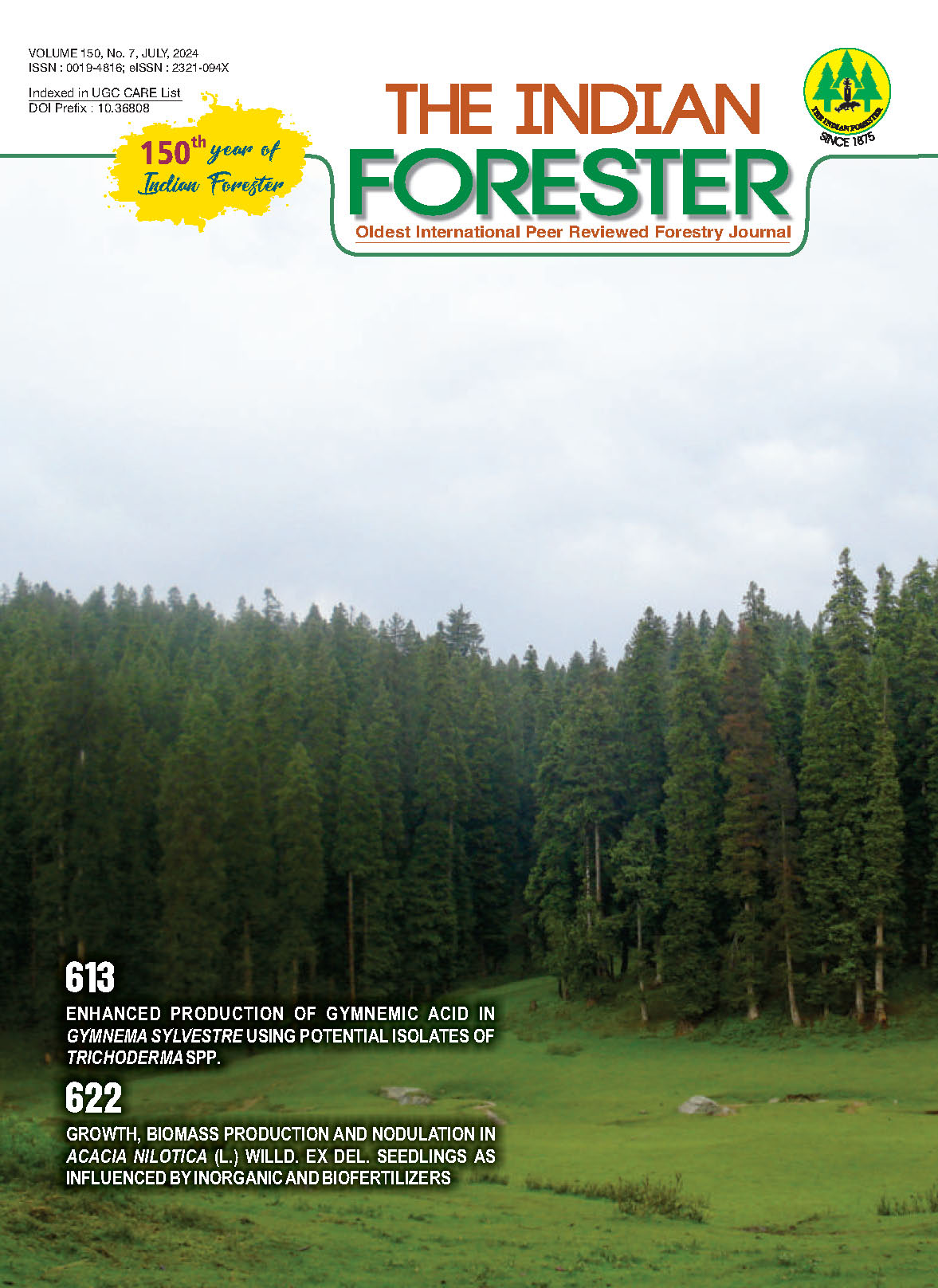Floristic Composition, IUCN Status and Ayurvedic Importance of Flora Documented in North Sikkim District of Sikkim State
DOI:
https://doi.org/10.36808/if/2024/v150i7/170317Keywords:
North Sikkim, Floristic study, IUCN status, Ayurvedic importance, Trade value.Abstract
The Himalayan state Sikkim is the homeland of 26% of flowering plants in India. Among the state, the North Sikkim district has dense vegetation and a vast diversity of flora. The present study intended to conduct floristic exploratory studies in the North Sikkim district according to the protocols provided by the Central Council for Research in Ayurvedic Sciences (CCRAS), New Delhi. The collected plant specimens were subjected to the preparation of Herbarium using standard techniques, and taxonomic identification was carried out using different floras. The IUCN Red List database was used to evaluate the threatened status of explored plant species. The ayurvedic importance and trade value of explored plants were verified with standard literature. This survey reported 120 plant species belonging to 106 genera and 56 families. Piper and Trichosanthes are among the genera, and Asteraceae among the families are most abundant. The IUCN red list data revealed that 71% of plant species are in the “Not Evaluated†category. Among the 120 plants, 14 plant species are reported in Ayurvedic texts, and 18 plants are reported to have good trade value in the Indian traditional market. This floristic exploratory data represents species richness in geographical areas and the diversity of flora in the North Sikkim district. It may help researchers to identify, collect, and validate specific plant species for future research studies.
References
Anonymous. (1999). The Ayurvedic Pharmacopoeia of India. Part 1, Volume II, 1st ed. New Delhi: Ministry of Health and Family Welfare, Government of India.
Anonymous. (2001). The Ayurvedic Pharmacopoeia of India. Part 1, Volume I, 1st ed. New Delhi: Ministry of Health and Family Welfare, Government of India.
Anonymous. (2001). The Ayurvedic Pharmacopoeia of India. Part 1, Volume III, 1st ed. New Delhi: Ministry of Health and Family Welfare, Government of India.
Anonymous. (2004). The Ayurvedic Pharmacopoeia of India. Part 1, Volume IV, 1st ed. New Delhi: Ministry of Health and Family Welfare, Government of India.
District Administrative Centre. (2023). District Administrative Centre, Mangan, North Sikkim. Last Updated (18 March, 2024) (https://mangan.nic.in/).
Forest survey of India. (2021). India state of forest report. Kaulagarh Road, P.O. IPE, Dehradun, Uttarakhand, India. Forest Survey of India, Ministry of Environment & Forests, 445-452.
Gogoi R., Sherpa N., Benjamin J.H.F., Agrawala D.K., Sundar K.R. and Sudhansu S.D. (2021). Flora of Sikkim–A Pictorial Guide. Sikkim: Botanical Survey of India, Kolkata and Forest & Environment Department.
Goraya G.S. and Ved D.K. (2017). Medicinal plants in India: an assessment of their demand and supply. Dehradun: National Medicinal Plants Board, Ministry of AYUSH, Government of India, New Delhi and Indian Council of Forestry Research and Education.
Hajra P.K. and Verma D.M. (1996). Flora of Sikkim (Vol. 1). Calcutta: Botanical Survey of India.
Hooker J.D. (1875). The Flora of British India (Vols. 1–7). 5, Henrieita Street, Covent Garden, London: Reeve L. & Co.
IUCN. (2022). The IUCN Red List of Threatened Species.Version 2021-3.IUCN Red List Unit. Available at: https://www.iucnredlist.org [Last accessed on 11 Feb 2022].
Jain S.K. and Rao R.R. (1976). A Handbook of Field and Herbarium Methods. New Delhi, India: Today and Tomorrow's Printers and Publishers.
Latif A., Razique A., Asadullah R.S. and Zuberi R.H. (2008). Phytochemical and Physico-chemical study of Coptis teeta Wall.: An effective drug of choice in ocular ailments. European Journal of Integrative Medicine, 1: 22-23.
O'Neill. (2017). Sikkim claims India's first mixed-criteria UNESCO World Heritage Site. Current Science, 112 (5): 893–994.
Population Census. (2011). East Sikkim District Religion Data-Hindu/Muslim. (https://www.census2011.co.in/data/religion/district/464-east-sikkim.html)
Ravindranath N.H., Sharma N., Sagadevan A., Jayaraman M. and Munsi M. (2012). Climate change and its impacts on forests of Sikkim. In: Climate Change in Sikkim-Patterns, Impacts and Initiatives. pp. 25-40.
Sharma P.V. (1978). Dravyaguna Vijnana Vol. II (Vegetable drugs). Oriental Cultural Literature Publishers, Chaukhambha Sanskrit Sansthan, Gopal Mandir Lane, Varanasi, India.
Vaidya B.G. (2016). Nighantu Adarsa Vol II. Monumental Treatises of the East Publishers, Chaukhambha Bharati Acadamy, Gopal Mandir Lane, Varanasi, India.
Vaidya B.G. (2018). Nighantu Adarsa Vol I. Monumental Treatises of the East Publishers, Chaukhambha Bharati Acadamy, Gopal Mandir Lane, Varanasi, India.
Downloads
Downloads
Published
How to Cite
Issue
Section
License
Unless otherwise stated, copyright or similar rights in all materials presented on the site, including graphical images, are owned by Indian Forester.





